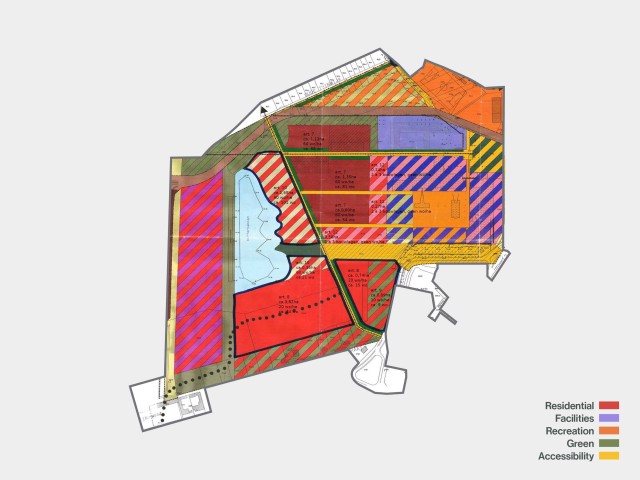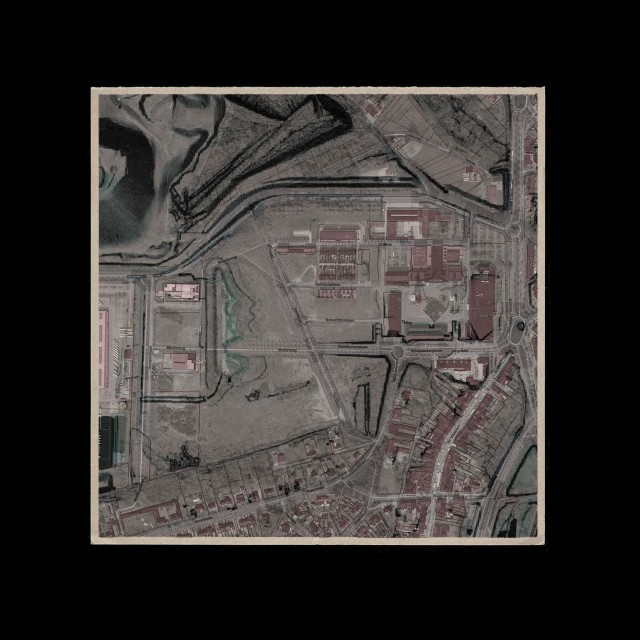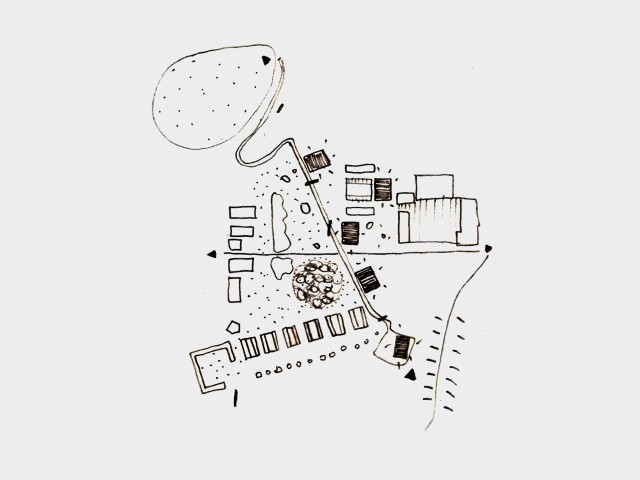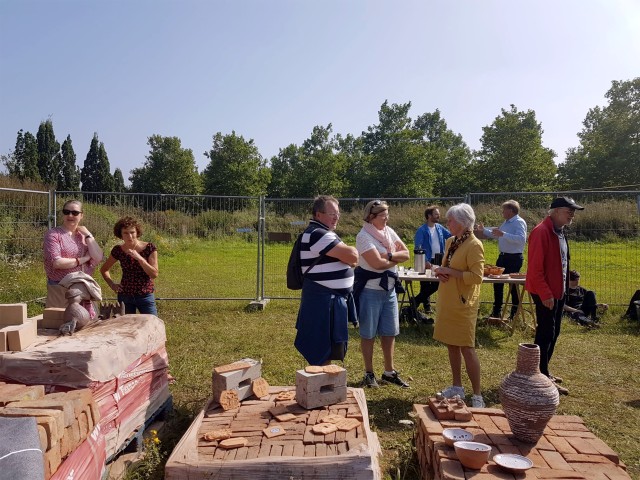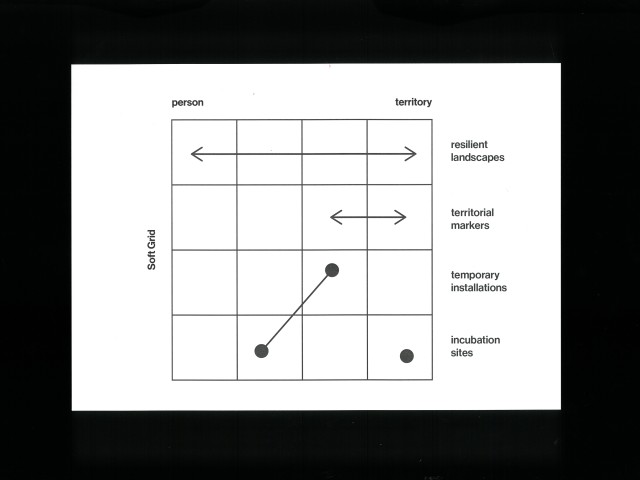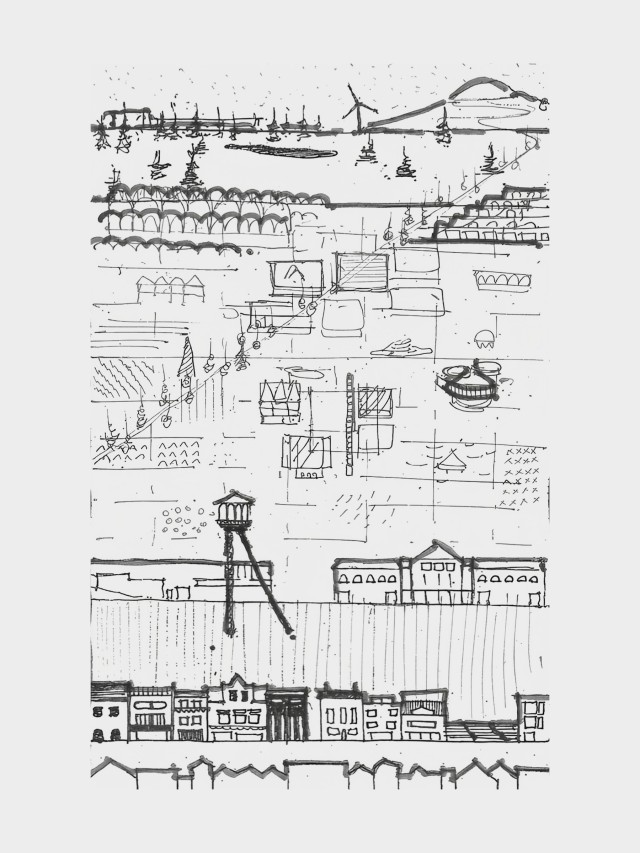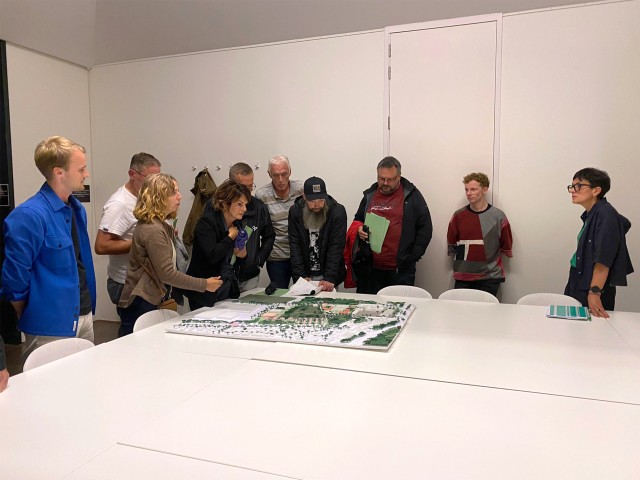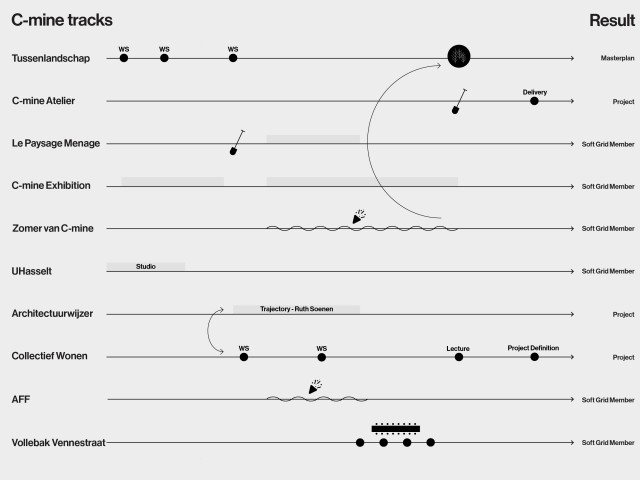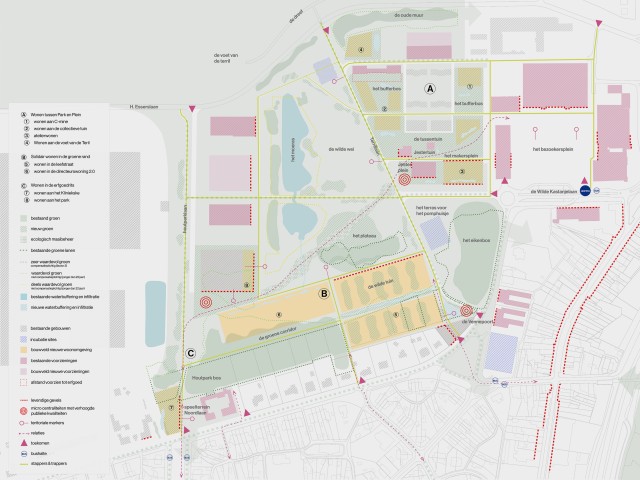C-Mine Masterplan
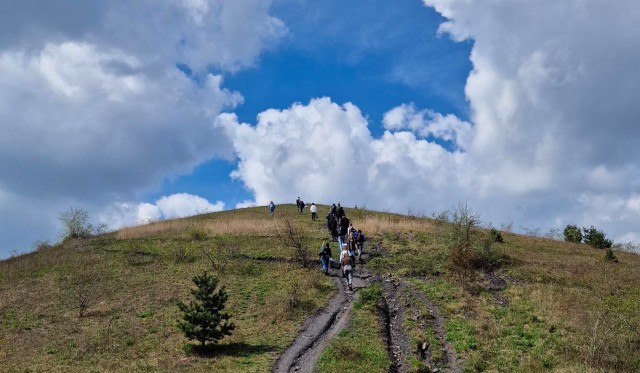
How can a masterplan succeed in an era of accelerated change? Is it possible to setup a framework for growth without predicting it?
The new masterplan of C-mine is an attempt to resist planning in a conventional sense, and layout a versatile framework for incubation. It stands in strong contrast to the previous vision which parceled the landscape into streets and private households.
A decade after completing the C-mine cultural center, two interconnected competitions were launched to simultaneously design a new masterplan for C-mine stretching from the Terril to Vennestraat and a new cultural facility called Jester (see project C-mine Atelier) that is situated within it. Together with the city of Genk, we embraced an unconventional zoning where-by the functional mix is shaped by demand rather than presumptions. Our vision proposed two approaches: the Open Edge, and the Soft Grid. The Open Edge proposes a compaction of the housing demand, towards the interface with Winterslag, to reduce land-take, and experiment with denser living typologies. The Soft Grid proposes as a master-palette inspired by the creative critical mass, the generous landscape, and 4 key layers of activity were identified each with their own specific spatial footprint, timeframe and guidelines.
The layer of the landscape which is informed by principles of permaculture and occupies most of the site. The layer of territorial markers, which continues a lineage of iconic features that demarcate positions, and act as a wayfinding system. The layer of temporary constructions, which allows for expansion and contraction of the activity footprint inspired by festival sites. The layer of incubation sites, which is organised as islands that would host actions with higher permanence.
The Soft Grid can be interpreted as a network of flexible thresholds to interconnect urbanities and ecologies. It can grow beyond the C-mine site to bring the various clusters of Genk closer together. The diagonal C-mine street that reached the Terril to the north and a dead-end to the south, will be integrated into the soft grid as a spine for a series of squares and gardens and it will continue outwards towards Vennestraat to complete the axis that begins from the Terril.
Taking advantage of the proximity to the creative infrastructure and vast amounts of green space, the accommodation facilities in the site will experiment with various typologies of living. They will explore healthy mixtures for living and working, collectiveness and density in addition to making the most out of the pedestrian-first strategy.
These concepts in tandem are still evolving in collaboration with various existing and new members in the site. For instance, parallel to the making of the plan, the project Le Paysage Ménagé was set up by Ciel Grommen and Maximiliaan Royakkers, introducing new practices of making and hospitality on the site, and doing so, critically interrogating its territory, process and concepts of the masterplan.
-
Location
Winterslag, Genk, Belgium
-
Client
City of Genk, C-mine
-
Program
Masterplan and process management
-
Invited competition
2018
-
Design
Ongoing
-
51N4E project team
Dieter Leyssen, Arya Arabshahi, Lasse Rau, Matteo Novarino, Wim Menten, Maud Maes
-
In collaboration with
Plant en Houtgoed, Simply Community, IDEA Consult, Ciel Grommen and Maximiliaan Royakkers
-
Image credits
51N4E
-
Photography Credits
Filip Dujardin
